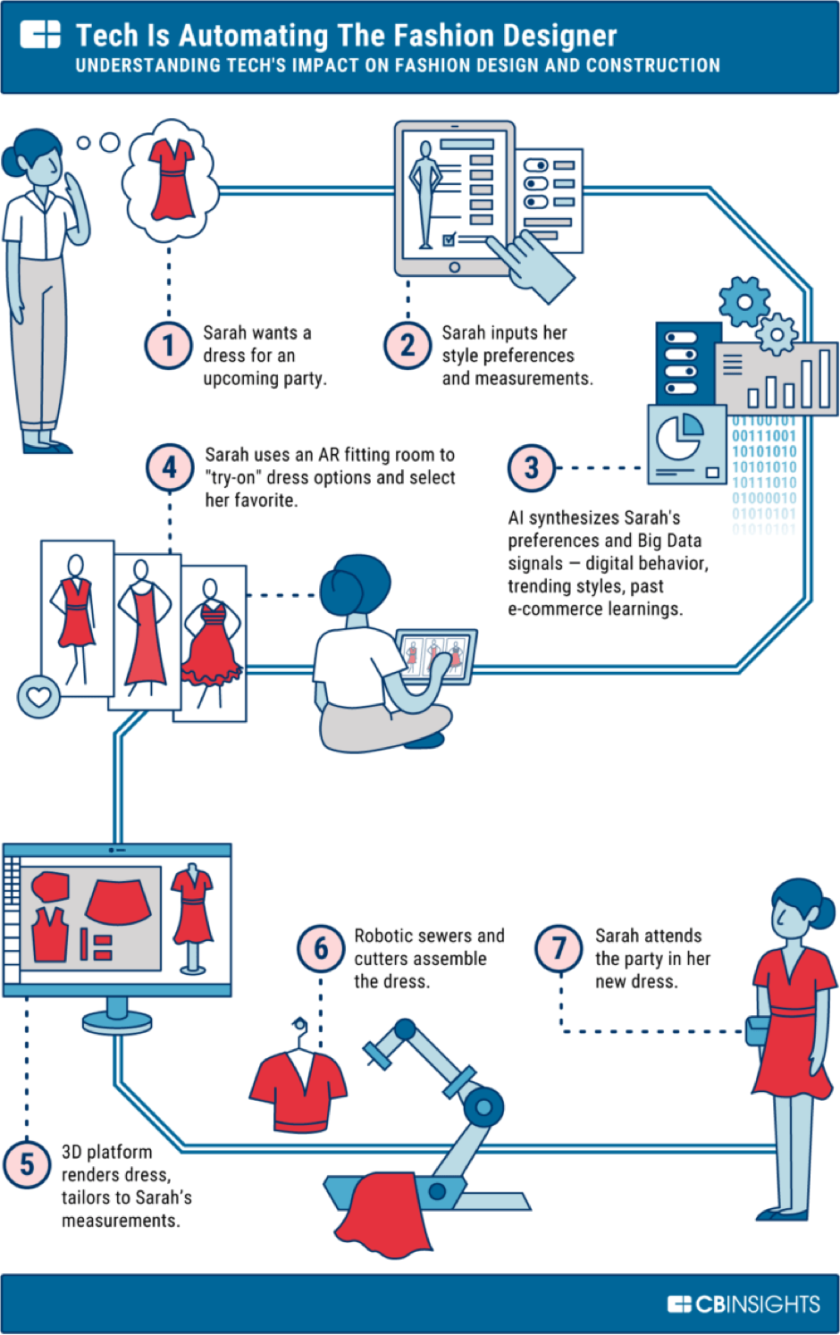Manika Walia, a professor of Fashion and Textiles at Sushant School of Design has given us her view on the future of fashion and what the rise of technology and artificial intelligence might mean…
Fashion and textiles is a field that draws insights from diverse fields, such as science, social science, and arts.
The recent trend of growing diversity in the fashion and textiles field has naturally led to greater interdisciplinary collaboration. During this Fourth Industrial Revolution, the entire textile industry, from manufacturing to retail, nowadays expects greater interaction among various technologies.
Great progress in materials science, innovations in design have facilitated the emergence of smart wear, and developments in 3D garment design technology and 3D printing have noticeably reduced the average time it takes from design to manufacturing.
Artificial intelligence has allowed the industry to react to consumer needs in real time. Thus, we believe that interdisciplinary and cross-functional research is more important than ever in the field of fashion and textiles.
Fashion has always been a forcing house for innovation — from the invention of the sewing machine to the rise of e-commerce. Fashion is forward-looking and cyclical.
It is one of the largest industries in the global economy, where tech is transforming it at a fast speed than ever.
From robots that can weave, sew and cut fabric, to Artificial Intelligence algorithms predicting trends and styles, to Visual Reality mirrors in dressing rooms, technology is automating, personalizing, and speeding up every aspect of fashion.
As more and more Artificial Intelligence “assistance” programs advance, they will help brands with the assistance of AI programs are making smart strategic decisions around product development and new business lines.
3D design platforms also make it easy to improve designs.

The next era of fashion is all about personalisation.
Technology is changing the process at all levels of fashion industry: designers, manufacturers, retailers, stylists, and consumers.
Virtual reality have a range of applications which allows production and distribution methods to evolve at a rapid pace. The moment customers taste change there is an immediate change in the trends.
Meanwhile from sketchpad to store shelf, every aspect of the industry is being automated or enhanced by tech — making for faster production, more effective inventory management, and a wider range of online and in-store retail experiences.
The outcome will be a sector that becomes extensively efficient, offering more options than ever before. A new insight of new manufacturing processes, distribution channels, and even raw materials and fabrics will make it easy for brands to offer hyper-personalized products and experiences.
Automation might take over many roles within the fashion industry. However, it will also likely result in new types of roles around curation, customer service, and engineering. As tech becomes more responsive to the individual, it will be interesting to watch how the role of designer will be massive.
We are entering the exciting world of Artificial Intelligence.




